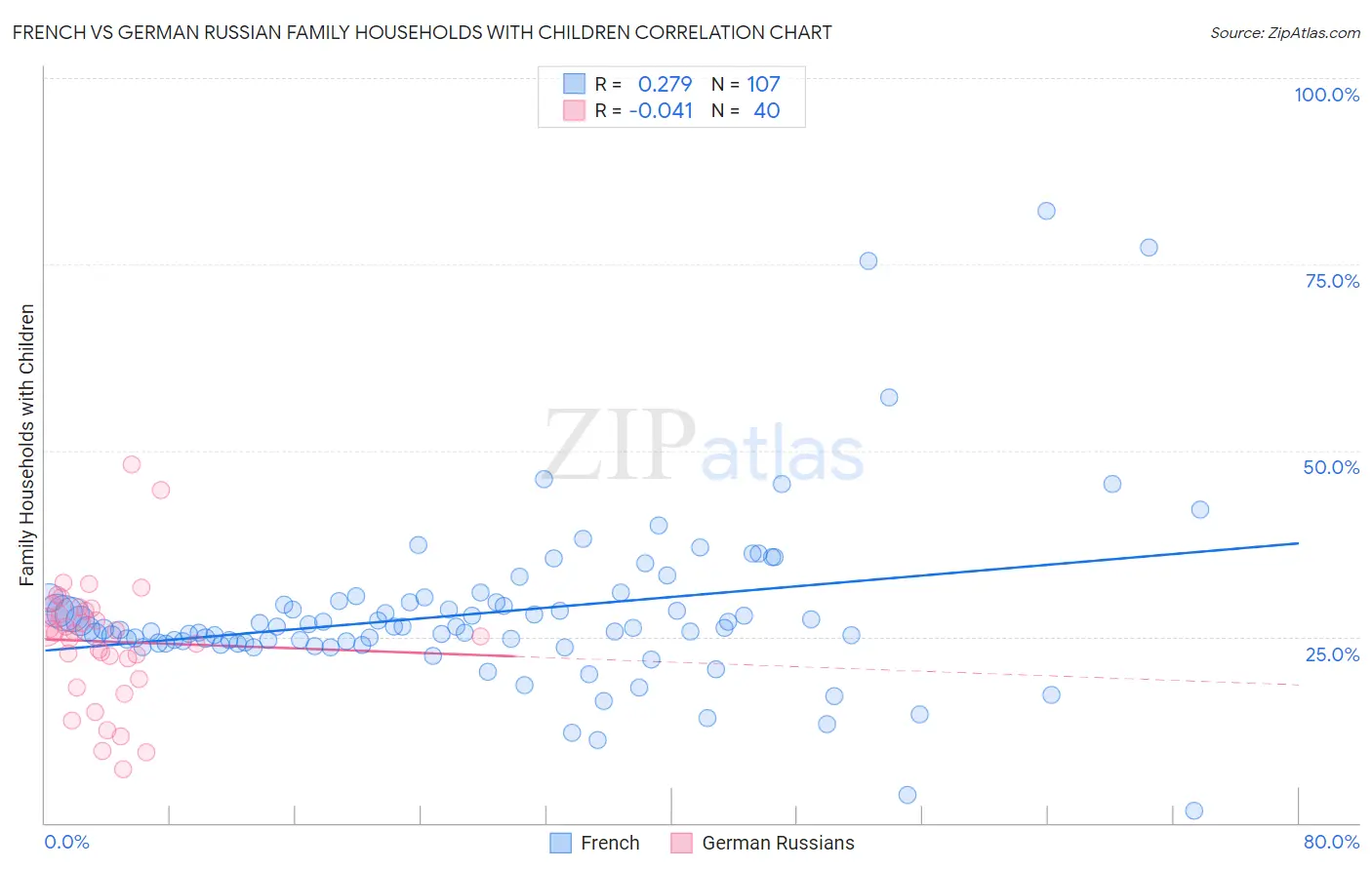French vs German Russian Family Households with Children
COMPARE
French
German Russian
Family Households with Children
Family Households with Children Comparison
French
German Russians
26.7%
FAMILY HOUSEHOLDS WITH CHILDREN
0.7/ 100
METRIC RATING
271st/ 347
METRIC RANK
26.8%
FAMILY HOUSEHOLDS WITH CHILDREN
1.5/ 100
METRIC RATING
255th/ 347
METRIC RANK
French vs German Russian Family Households with Children Correlation Chart
The statistical analysis conducted on geographies consisting of 571,388,158 people shows a weak positive correlation between the proportion of French and percentage of family households with children in the United States with a correlation coefficient (R) of 0.279 and weighted average of 26.7%. Similarly, the statistical analysis conducted on geographies consisting of 96,442,482 people shows no correlation between the proportion of German Russians and percentage of family households with children in the United States with a correlation coefficient (R) of -0.041 and weighted average of 26.8%, a difference of 0.40%.

Family Households with Children Correlation Summary
| Measurement | French | German Russian |
| Minimum | 1.6% | 7.2% |
| Maximum | 82.1% | 48.2% |
| Range | 80.6% | 41.0% |
| Mean | 28.2% | 24.4% |
| Median | 26.1% | 25.6% |
| Interquartile 25% (IQ1) | 24.2% | 20.7% |
| Interquartile 75% (IQ3) | 29.6% | 28.7% |
| Interquartile Range (IQR) | 5.4% | 7.9% |
| Standard Deviation (Sample) | 11.5% | 8.4% |
| Standard Deviation (Population) | 11.5% | 8.3% |
Demographics Similar to French and German Russians by Family Households with Children
In terms of family households with children, the demographic groups most similar to French are Immigrants from Zaire (26.7%, a difference of 0.010%), Somali (26.7%, a difference of 0.060%), Immigrants from Denmark (26.7%, a difference of 0.070%), Immigrants from Hungary (26.7%, a difference of 0.10%), and Immigrants from Belgium (26.7%, a difference of 0.11%). Similarly, the demographic groups most similar to German Russians are Immigrants from Scotland (26.8%, a difference of 0.0%), Scotch-Irish (26.8%, a difference of 0.010%), Italian (26.8%, a difference of 0.030%), Slavic (26.8%, a difference of 0.060%), and Immigrants from Cuba (26.8%, a difference of 0.070%).
| Demographics | Rating | Rank | Family Households with Children |
| Italians | 1.5 /100 | #253 | Tragic 26.8% |
| Immigrants | Scotland | 1.5 /100 | #254 | Tragic 26.8% |
| German Russians | 1.5 /100 | #255 | Tragic 26.8% |
| Scotch-Irish | 1.4 /100 | #256 | Tragic 26.8% |
| Slavs | 1.3 /100 | #257 | Tragic 26.8% |
| Immigrants | Cuba | 1.3 /100 | #258 | Tragic 26.8% |
| Immigrants | Lithuania | 1.2 /100 | #259 | Tragic 26.8% |
| Immigrants | Jamaica | 1.2 /100 | #260 | Tragic 26.8% |
| Immigrants | Belarus | 1.1 /100 | #261 | Tragic 26.8% |
| Immigrants | Russia | 1.0 /100 | #262 | Tragic 26.8% |
| Immigrants | North Macedonia | 1.0 /100 | #263 | Tragic 26.7% |
| Taiwanese | 0.9 /100 | #264 | Tragic 26.7% |
| Chippewa | 0.9 /100 | #265 | Tragic 26.7% |
| Maltese | 0.9 /100 | #266 | Tragic 26.7% |
| Immigrants | Uzbekistan | 0.9 /100 | #267 | Tragic 26.7% |
| Immigrants | Belgium | 0.9 /100 | #268 | Tragic 26.7% |
| Immigrants | Denmark | 0.8 /100 | #269 | Tragic 26.7% |
| Immigrants | Zaire | 0.7 /100 | #270 | Tragic 26.7% |
| French | 0.7 /100 | #271 | Tragic 26.7% |
| Somalis | 0.7 /100 | #272 | Tragic 26.7% |
| Immigrants | Hungary | 0.6 /100 | #273 | Tragic 26.7% |